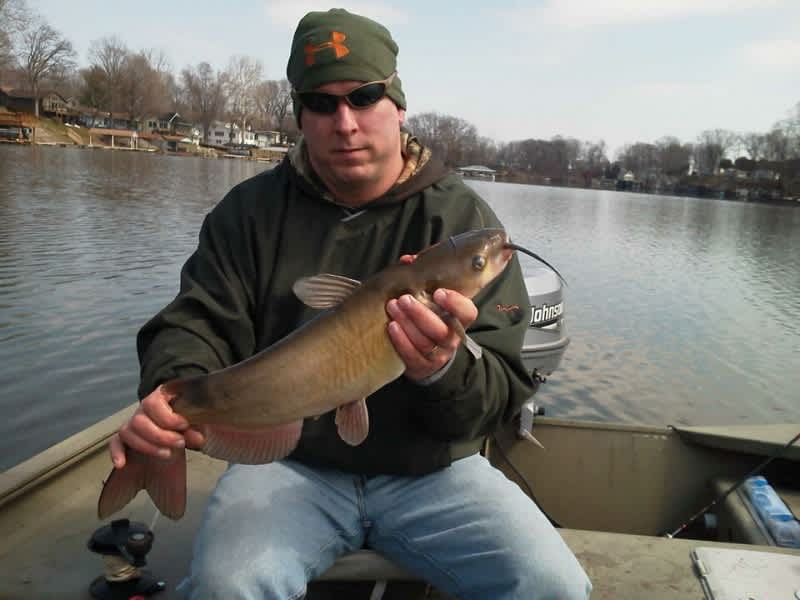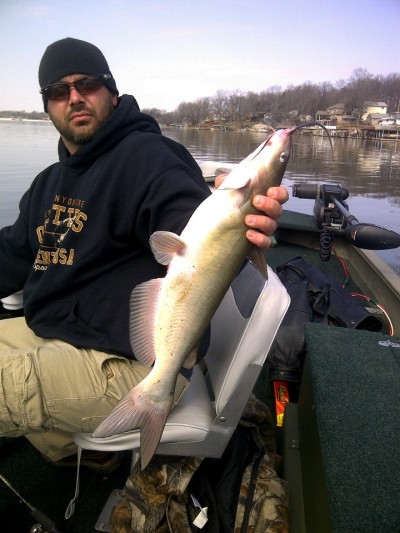A Quick Primer on Catching America’s Catfish
Joe Martino 05.28.14

A recent perusal of my Facebook news feed cemented what I already knew: various species of catfish are popular targets for many anglers across the country. In fact, for lots of them, catfish rank at the very top of their list of favorite fish to go after.
As I browsed through the feed, I noticed several posts about catfish and even a video of people reeling in a few. Then I got to thinking: What is the fascination with catfish? I have fished all of my life, and although I do enjoy catfishing, I never really considered it to be my favorite. But then again, I have not ever really done it seriously, or all that often. Then the following thought hit me: They can provide good meals, get huge, and be found almost everywhere. Rumors abound in many fishing communities of man-sized cats hanging out near reservoir dams or in big rivers and other waterways. The neat thing is that they might not all be rumors.
Catfish provide great sport, and for the most part, also make for some fine eating. These facts, coupled with the possibility of dealing with fish of monstrous proportions (when referring to species such as blues or flatheads), make it easy to see the attraction American anglers have to them.
The three most popular species of catfish are the channel, flathead, and blue catfish, and methods for catching them can often vary as much as the fish themselves.
Channel catfish
Channel cats will eat just about anything. They are attracted to foods that have a strong odor and can easily be caught on a variety of bait from redworms or nightcrawlers to chicken livers. Channels—as they are often called—are also likely the first species of catfish to become active during the year, so think spring to cash in on the firm, tasty filets that they offer. Channels can usually be caught with regularity beginning in March (or even February) in many parts of the country when the water temperatures are still cold. In fact, water temperatures in the 50s are often the best conditions to catch this species of whiskerfish in. But that doesn’t mean that that action for them dies down as spring progresses. The action can remain hot for them as the water temps increase, too. Water temperatures in the mid- to high 60s still mean plenty of excitement.

Channel catfish are usually the most predominant catfish in many lakes, ponds, and reservoirs, and rarely exceed 10 to 12 pounds. Don’t be surprised to catch them one right after the other either if you time it right.
Chicken livers, red worms, nightcrawlers, and shad guts are perfect baits that channels find hard to resist. Stink baits such as blood or cheese also work well. Use a light or medium action rod with eight- to 10-pound test line and have your bait either on the bottom or suspended under a bobber and be ready. When fishing in reservoirs, casting your bait near the river is best, but is not necessary as they will find your bait by the smell. We often catch them a hundred yards from the channel.
Think daylight hours when going after channel catfish. They are very active when the sun’s up, though they’re more than eager to take your offerings just about any time.
Flathead catfish
The larger flatheads become active a little later on in the year as temperatures increase, with late June or early July being the typical spawning period for them in most areas. Flatheads are also generally mostly found in large rivers or reservoirs.
This species of catfish is predatory, preferring live bait such as bluegills, bass, shad, and crayfish. Large shiners and goldfish can also do the trick. Many anglers prefer to fish for flatheads at night, as the fish move into the shallows to feed. During the daytime they tend to hunker down in holes, making them hard to catch. Remember, as with all catfish, they are still opportunistic—if you find where they are laying up at and drop your bait in their face, you can still sometimes catch them during daylight hours. Submerged wood is your best when targeting flatheads, especially during the daytime.
Blue catfish
Blue catfish are the largest species of catfish and typically a large river or reservoir species. They were originally native to the Mississippi River drainage, including the Ohio, Tennessee, Missouri, and Arkansas Rivers. They have also been introduced into various other reservoirs, lakes, and rivers throughout the country.
Blues are a common target for anglers plying the waters of the big rivers. They are opportunistic feeders and will eat just about any prey they can catch. Good choices for blues include shrimp, crayfish, live bait, and cut-up bait such as shad. As with flatheads, large shiners or suckers will work as well. Target them in the deeper holes that have a swift current. Remember to use heavier sinkers when going after blues in order to keep your bait stationary since they prefer more swift water. Although they prefer swift current, fishing on the edges of the current is also likely to yield good results.
Big blues will spawn in smaller feeder creeks, so either find the deepest holes you can in these smaller tributaries or fish the mouths of them where they flow into the larger rivers or reservoirs to find them at this time.
So, after deep consideration and some thought—and after a recent weekend having a blast with my family catching several channel cats, catfish just may have moved up to be my favorite fish, too!

